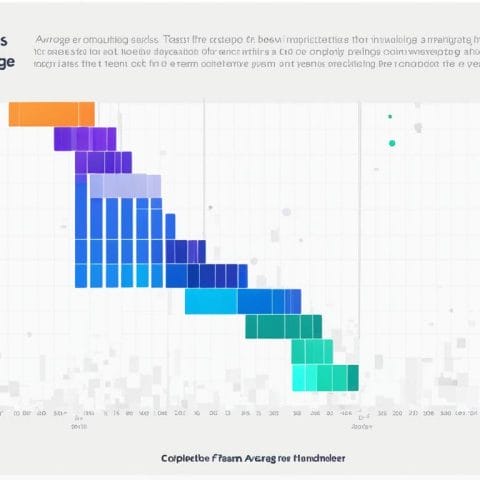The metaverse is a digital world that has become increasingly popular in the business realm. It allows companies to create and customize their own virtual worlds, enabling them to run immersive learning, training, and marketing campaigns. But what about data in metaverse experiences?
How can businesses use the data in metaverse platforms to enhance the user experience or the company’s bottom line?
And what about personal data?
How should companies treat potentially sensitive information in this new era of avatars and personal interactions?
Data plays an important role when it comes to optimizing performance within this new environment. From big data analytics tools used for understanding user behaviour and trends to consumer data collection and management strategies designed for better targeting – these are just some of the topics we will be discussing as part of our exploration into “data in metaverse”.
Join us on this journey as we take a closer look at how businesses can leverage data within the ever-growing world of virtual reality.
Table of Contents:
- What is the Metaverse?
- Data in the Metaverse
- Big Data and Analytics in the Metaverse
- Consumer Data Collection and Management in the Metaverse
- FAQs in Relation to Data in Metaverse
- Conclusion
What is the Metaverse?
The metaverse is a virtual world that combines elements of the physical and digital realms. It is an interconnected network of shared 3D spaces, accessible through any device with internet access. Using the data in metaverse, the metaverse allows users to interact in real-time, enabling them to collaborate, create content, and explore new worlds together.
Definition of the Metaverse:
The term “metaverse” was first coined by science fiction author Neal Stephenson in his 1992 novel Snow Crash. In this book, Stephenson described a virtual world where people could interact as avatars and experience immersive environments like never before. Today, the term has come to refer to any type of highly customized online environment that allows for cloud-based social interaction between users from different locations around the globe and enhances smart working.
By leveraging advanced technologies such as augmented reality (AR), virtual reality (VR), artificial intelligence (AI) and blockchain technology, businesses can now create unique experiences within their own custom-built metaverses. This opens up countless opportunities for innovation across multiple industries – from education and training to marketing campaigns or customer service initiatives – all while providing users with an engaging way to connect with each other in real-time regardless of location or language barriers
The Metaverse is an exciting and rapidly evolving digital environment that has the potential to revolutionize how businesses operate. As organizations increasingly explore this new frontier, it’s important to understand the data requirements and challenges associated with managing data in the metaverse.
Key Takeaway: Data is an essential part of the metaverse, enabling businesses to create unique experiences with advanced technologies such as AR, VR, AI and blockchain. This allows for increased collaboration, content creation and exploration between users in real-time.
Data in Metaverse Experiences
Data is an essential component of the metaverse. It enables businesses to create immersive experiences and customize their virtual worlds with a wide range of features and functions. Several types of data can be used in the metaverse, including audio, video, 3D models, textures, animations, scripts, and more.
This data can be used to create realistic environments for users to explore or interact with in various ways.

Types of Data in Metaverse Platforms:
Audio files such as music or sound effects can be added to enhance the user experience within a virtual world. Video files such as live-action footage or computer-generated animation can also be included for further immersion into a scene or environment.
3D models provide detailed visuals that allow users to move around freely within a space while textures add realism by providing surfaces with varying colours and patterns. Animations bring objects alive through movement while scripts enable complex interactions between characters or objects within the world itself.
Managing large amounts of data in the metaverse presents unique challenges due to its size and complexity compared to traditional web development projects. Ensuring all assets are optimized for performance is critical when dealing with high levels of detail which requires significant storage capacity on servers as well as efficient networking solutions for smooth playback across multiple devices simultaneously without lag time issues occurring during gameplay sessions or other interactive activities taking place inside these digital spaces.
Additionally, ensuring compatibility between different platforms is key since not all operating systems support certain formats which could lead to incompatibility issues if not addressed properly beforehand resulting in potential loss of revenue from dissatisfied customers who may have had difficulty accessing content due to technical difficulties encountered along their journey inside this new frontier we call “the metaverse”.
Data in the Metaverse is an important consideration for businesses to make when entering the virtual world. To get the most out of their experience, they must understand how to effectively leverage and manage data in order to maximize its potential. Next, we’ll look at how Big Data and Analytics can be used within the metaverse.
Key Takeaway: Data is an essential component of the metaverse and there are several types, such as audio, video, 3D models, textures, animations and scripts. Managing large amounts of data presents unique challenges in terms of optimization for performance and compatibility across platforms.
Big Data and Analytics in Metaverse Platforms
Big Data and Analytics in the Metaverse is a powerful tool for businesses to gain insights from user behaviour. By leveraging big data and analytics, companies can better understand how their users interact with their virtual worlds, allowing them to optimize experiences and improve engagement.
Benefits of Big Data and Analytics in the Metaverse: With big data and analytics, businesses can identify trends in user behaviour that would otherwise be difficult or impossible to detect. This information can be used to tailor content specifically for each user’s needs, helping increase engagement levels.
Additionally, it allows companies to track performance metrics such as average session length or total time spent on certain activities within the metaverse. This helps provide valuable feedback which can then be used to refine marketing strategies or adjust product offerings accordingly.
Challenges with Big Data and Analytics in the Metaverse: One of the biggest challenges associated with using big data and analytics in this environment is privacy concerns surrounding personal information collected from users. Companies must ensure they are following all applicable laws when collecting any type of sensitive information about their customers while also providing transparency regarding what types of data are being collected.
Additionally, there may be difficulties integrating existing systems into new platforms as well as ensuring accuracy when analyzing large amounts of complex data sets due to potential errors or discrepancies between different sources.
Big Data and Analytics in the Metaverse can provide businesses with valuable insights into customer behaviour, enabling them to make more informed decisions about their virtual world. Moving on, let’s explore how consumer data collection and management in the metaverse can benefit businesses.
Key Takeaway: Big Data and Analytics in the Metaverse can provide valuable insights into user behaviour, helping businesses optimize experiences and improve engagement. However, privacy concerns must be addressed to ensure compliance with applicable laws while integrating existing systems may also present challenges.
Consumer Data Collection and Management in the Metaverse
Collecting consumer data in the metaverse is essential for businesses to create personalized user experiences and optimize their virtual worlds. Consumer data can be used to understand customer preferences, track engagement levels, and develop targeted marketing campaigns. By leveraging this information, companies can improve the overall user experience within their virtual world and drive higher levels of customer satisfaction.
Benefits of Collecting Consumer Data in the Metaverse:
Consumer data provides valuable insights into how customers interact with a company’s virtual world. This information can be used to identify trends in usage patterns, uncover new opportunities for growth, and gain an understanding of what features are most popular among users. Additionally, collecting consumer data allows businesses to tailor content specifically for individual users based on their interests or past behaviours.
Challenges with Collecting Consumer Data in the Metaverse:
One challenge associated with collecting consumer data is ensuring that it is done ethically and securely without violating any privacy laws or regulations. Companies must also ensure that they have adequate measures in place to protect personal information from being accessed by unauthorized parties or malicious actors who may attempt to exploit it for nefarious purposes.
Furthermore, companies must consider potential implications around GDPR compliance when dealing with EU citizens’ personal data collected through a metaverse platform as well as other applicable local laws governing such activities depending on where the business operates from geographically speaking.
Solutions for Collecting and Managing Consumer Data in the Metaverse:
Businesses should implement robust security protocols such as encryption technologies when storing sensitive customer information within a metaverse platform environment. Additionally, organizations should take steps to ensure that all staff members involved in handling customer data receive proper training on best practices related to protecting this type of information. Finally, companies should provide clear opt-in/opt-out options so customers are aware of how their personal details will be used before providing consent.
Key Takeaway: Businesses should take steps to ensure customer data is collected and managed ethically and securely, including implementing encryption technologies, providing training for staff members handling data, and offering clear opt-in opt-out options.
FAQs in Relation to Data in Metaverse
What data is available in the Metaverse?
The Metaverse provides a wide range of data that can be used to create and customize virtual worlds. This includes 3D models, textures, animations, audio files, scripts, physics engines and more. Additionally, the Metaverse also offers access to real-time analytics such as user activity tracking and usage statistics which can help businesses gain insights into how their virtual world is being experienced by users.
Finally, the Metaverse also allows for integration with other platforms such as social media networks or eCommerce stores to provide even more data points for analysis.
How is data in metaverse stored?
Data in the metaverse is stored using a distributed ledger technology, such as blockchain. This allows for the secure and immutable storage of data, ensuring that it remains private and protected from malicious actors. Data can be stored on-chain or off-chain depending on the needs of the user.
On-chain data is publicly visible while off-chain data is encrypted and only accessible to those with access rights. In either case, all transactions are securely recorded in an immutable ledger, providing a reliable source of truth for users to trust their virtual worlds with.
What is included in the metaverse?
The metaverse is a virtual universe that allows users to create and explore digital environments. It includes 3D avatars, interactive objects, real-time communication tools, and other features such as artificial intelligence (AI) agents. With Hyperspace’s no-code platform, businesses can quickly build custom virtual worlds with intuitive drag-and-drop tools and customizable templates.
These worlds are perfect for immersive learning experiences, training sessions, marketing campaigns, or any other type of activity where an engaging environment is needed. Additionally, the metaverse provides access to powerful analytics capabilities so businesses can measure their success in the virtual world.
What is metaverse Analytics?
Metaverse Analytics is a suite of tools and services that provide businesses with insights into the performance of their virtual worlds. It offers detailed metrics on user engagement, activity, and more to help organizations understand how their metaverse experiences are performing. With Metaverse Analytics, businesses can measure the success of their campaigns in real time and make data-driven decisions about how to optimize for maximum impact.
Conclusion
As businesses increasingly move into the metaverse, data will become a critical asset. With Hyperspace’s no-code platform, companies can easily create and customize their own virtual worlds while also collecting and managing consumer data in order to gain valuable insights that can be used for marketing campaigns or other business initiatives.
By leveraging big data analytics, organizations can unlock even more value from their metaverse experiences and ensure they remain competitive in this rapidly evolving landscape. Data in metaverse is essential to the success of the metaverse, so it’s important for decision-makers to understand how best to use it within their organization.
Are you looking for an easy way to create and customize your own virtual world?
Look no further than Hyperspace!
Our “no code” metaverse platform makes it simple to run immersive virtual events, self-paced or instructor led training, marketing campaigns and more with customizable, drag-and-drop templates that can be completely branded to your organization in minutes.
Take advantage of the power of data in the metaverse today – join us at Hyperspace!





